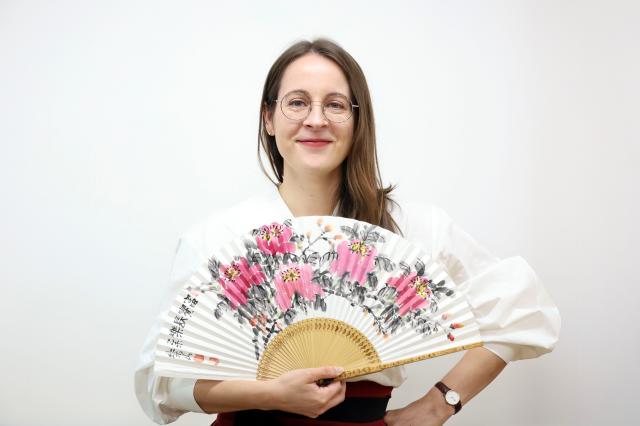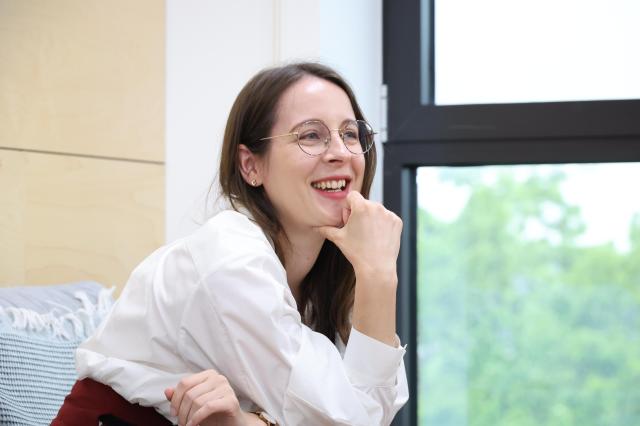
SEOUL, May 13 (AJP) - When Anna Yates-Lu first sat down for a live Pansori performance, she barely understood a word. At the time, she had studied Korean for just six months and couldn’t keep up with the subtitles and the stage at the same time. But that didn’t matter.
“The sound alone completely captivated me,” she said in an interview with Aju Press on May 9. “I didn’t need to understand the words. The voice, the gestures, the rhythm. All of it made sense on its own. I was stunned.”
Pansori is one of the most expressive forms of traditional Korean Gugak music. A single singer narrates dramatic tales through powerful vocals, stylized gestures, and rhythmic storytelling, accompanied by a drummer who adds both beats and verbal cues. The stories are long, the delivery emotional, and the connection with the audience is part of the magic.
In fact, one of the defining features of Pansori is its interactive nature. Audiences are expected to react with Chuimsae, spontaneous verbal exclamations like “Eolsigu!” (“All right!”) or “Jotta!” (“Great!”). These aren’t interruptions, they’re welcomed responses, part of the tradition that helps carry the performance forward.
Today, Yates-Lu is an Assistant Professor at Seoul National University’s Department of Korean Music. But her path to Korean traditional music wasn’t a straight one. Originally trained in anthropology and political science in Britain, she encountered Pansori during a master’s program in London. A professor had urged her to attend a performance at the local Korean Cultural Center.
“It was a dual concert, with Western classical music in the first half and Pansori in the second,” she recalled. “Song Soon-seop performed the ‘Bird Song,’ and Lee Ja-ram did a battle scene from Jeokbyeokga. I didn’t understand the lyrics, but the sound, the expressiveness, the raw energy, it all made sense.”

That performance marked a turning point. “From that moment on, I wrote every paper about Pansori. I had so many questions,” she said. “Eventually, I switched fields entirely.”
Still, she acknowledges that many Koreans and non-Koreans alike find Pansori intimidating. “It’s not that Pansori is hard,” she said. “People just don’t know how to listen to it. If you’ve never experienced it live, it’s like trying to appreciate wine without ever tasting it.”
She cautions against labeling Gukak as “difficult,” especially in public discourse. “Once people hear that often enough, they start to believe it. Even children,” she said. “But my son listens to Pansori at home. Kids don’t think it is hard unless someone tells them it is.”
She believes that engaging young audiences is key to sustaining traditional music. “Start early. Make it fun. Give them the space to explore it without pressure,” she said. “There are amazing educational programs out there. We just need to support them more.”
Yates-Lu also emphasized that building an international audience is not only about exposure but about cultivating depth. “We need to take care of the enthusiasts, the manias,” she said. “They’re the ones who go out of their way to study, to travel for performances. Give them something rich, something meaningful.”
But she also believes that beginners need a little help. “Keep performances intimate,” she said. “Small theaters, close audiences. Those are places where Pansori really shines. And just five minutes of explanation before the show can make all the difference.”
As for how someone with no background should begin? “Start with the voice,” she said. “Don’t worry about the story. Just listen to the timbre, the texture. Let it wash over you.” Then, smiling, she added, “And if nothing else—just say ‘Eolsigu!’ It’s always the right response.”
Copyright ⓒ Aju Press All rights reserved.




